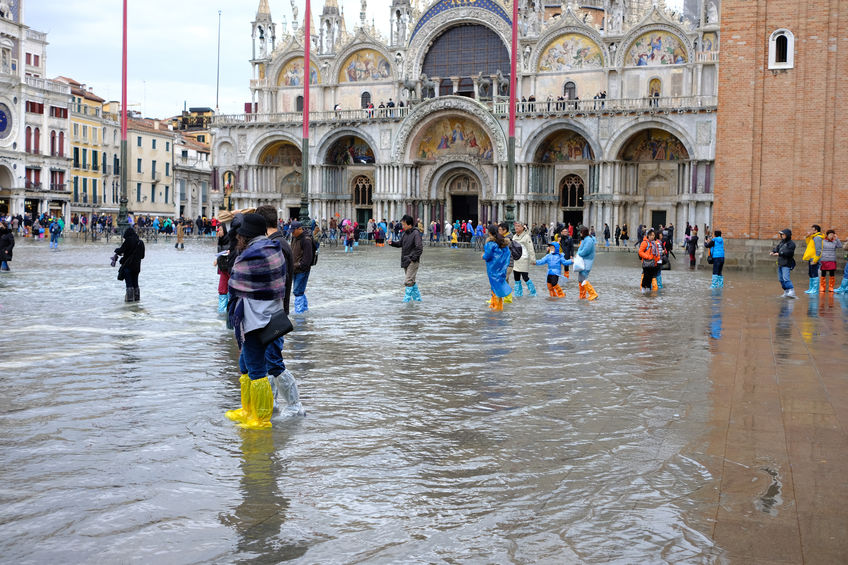Reporting on the rising water levels in Venice that have flooded the city’s picturesque piazzas, churches, and hotels, the Guardian (Nov. 15) noted that the area’s regional council voted to reject a plan to combat climate change minutes before its offices on the Grand Canal were inundated by the deluge.
Footage of the aqua alta, or high water, punishing Venice is indeed spectacular, and the Guardian regretted that Veneto’s regional councilors had not taken the “climate emergency” more seriously before they were forced to flee the Ferro Fini Palace for higher ground.
While the Guardian and other media outlets acknowledge that high tides have bedeviled the lagoon city in the past, they attribute this most recent unpleasantness to the effects of climate change. The message is clear: If only the powers that be would live up to their climate responsibilities, future generations of Venetians, and the city’s many visitors, would be spared such ravages.
And what exactly would the rejected plan have done?
It would have included funding for renewable energy projects, replaced diesel-powered buses with less-polluting vehicles, banned high-emission stoves, and reduced plastic use.
As Peggy Lee asked in her final hit song: “Is that all there is?”
Actually, there’s a lot more, but it won’t be found in some half-baked climate scheme. Instead, understanding Venice’s unique, geography, geology, and the whims of cosmology will tell us much more.
Subsidence and King Tides
Located on the edge of a lagoon on the Adriatic Sea in northeastern Italy, Venice is situated on 118 islands connected by over 400 bridges. Venice has been vulnerable to high tides going back to Roman times. What’s more, the city has always been susceptible to subsidence – the sinking of soft marsh land under the weight of heavy buildings. Venice has been sinking at a rate of a few inches a year for millennia.
Over the centuries, geochemist William Balgord explains, Venetians have adapted to the encroaching Adriatic by abandoning street-level lower floors of buildings along the waterfront to the relentless incursions of salt water and adding waterproofing to the next level of structures as it became necessary. As the centuries passed, canals replaced the original roadways.
The current flooding is exacerbated by what are known as king tides drawn by the Moon, which is making a closer approach to the earth than it usually does. The effect of king tides can be felt elsewhere in coastal cities, including Charleston and Miami.
Further geologic instability in the Venice area results from the shifting of tectonic plates; Italy is one of the most earthquake-prone countries in the world.
Venice’s constant struggle with nature have been accompanies by a generous potion of human folly. A massive underwater project to protect Venice from tidal flooding has been under construction since 2003 and was supposed to be completed in 2011. At a cost of over $6 billion and rising, the project is known by its Italian acronym MOSE, a reference to the biblical Moses who parted the waters. According to the Washington Post (November 22), it “consists of 70 massive, yellow underwater gates positioned across the three inlets that separate the Adriatic Sea from the Venetian lagoon. The gates are designed to rise during high tides, sealing off the lagoon.”
Right now, it’s serving as a place for barnacles and clams to seek refuge. The project is over budget, behind schedule, and mired in bribery and kickback scandals. Instead of saving Venice, it’s become an Italian version of California’s fabled bullet train.
Venice and COP 25
Look for speakers addressing December’s United Nations Conference of the Parties (COP 25) in Madrid to point to the flooding in Venice as further proof that urgent action needs to be taken on climate change. But the story in Venice is much more complex than alarmist would have you believe, and it has nothing to do with atmospheric levels of CO2.
